+17
T-47
George1
wilhelm
franco
Berkut
Zivo
GunshipDemocracy
TheArmenian
sepheronx
max steel
higurashihougi
x_54_u43
GarryB
Big_Gazza
magnumcromagnon
medo
Morpheus Eberhardt
21 posters
SR-10 jet trainer

Guest- Guest
- Post n°2
 Re: SR-10 jet trainer
Re: SR-10 jet trainer
Morpheus Eberhardt wrote:
Few photos:

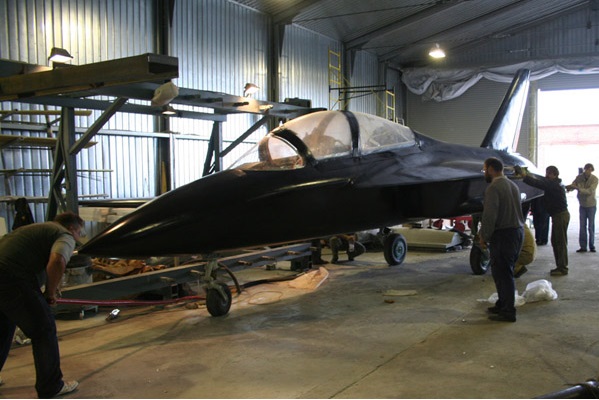
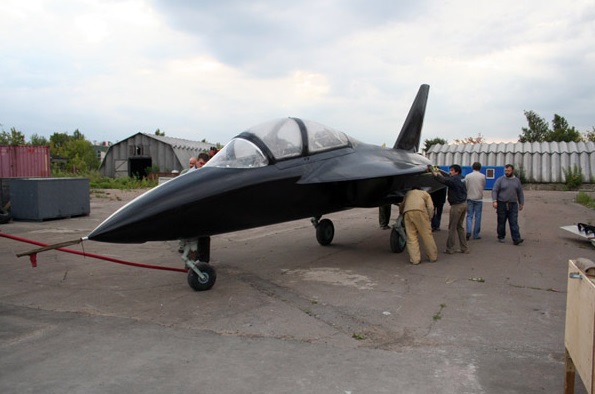
I was hoping this would win the state contract for entry trainer... that Yak 152 truly looks like a toy.

medo- Posts : 4343
Points : 4423
Join date : 2010-10-24
Location : Slovenia
- Post n°3
 Re: SR-10 jet trainer
Re: SR-10 jet trainer
Militarov wrote:Morpheus Eberhardt wrote:
Few photos:
I was hoping this would win the state contract for entry trainer... that Yak 152 truly looks like a toy.
Actually Yak-152 is a trainer for the beginners. SR-10 is more like a trainer between Yak-152 and Yak-130. Like a jet powered PC-21. I hope it will get a more conventional wings and as a cheap light jet trainer it will quite interesting offer for poorer air forces as for civil air schools.

Guest- Guest
- Post n°4
 Re: SR-10 jet trainer
Re: SR-10 jet trainer
medo wrote:Militarov wrote:Morpheus Eberhardt wrote:
Few photos:
I was hoping this would win the state contract for entry trainer... that Yak 152 truly looks like a toy.
Actually Yak-152 is a trainer for the beginners. SR-10 is more like a trainer between Yak-152 and Yak-130. Like a jet powered PC-21. I hope it will get a more conventional wings and as a cheap light jet trainer it will quite interesting offer for poorer air forces as for civil air schools.
In most armies real entry trainers are basically gone (Serbia being one of the rare to use Lasta-95 for an example), they go directly from Ultralights to advanced trainers coz its cheaper or they removed reactive engine trainers and go with turboprop and then jump to multirole two seaters, this would be ideal for entry trainer coz it covers same envelope of speeds as Yak152 does plus abit more. This was direct competitor to Yak-152 in Russia basically, but they apparently dropped it coz it wasnt ready...but it seems it might be even available before Yak152 how things are going.
I look at this somewhat like US is experimenting with Textron AirLand Scorpion. Also i belive wing geometry is there with a reason coz of performances on low speeds.

magnumcromagnon- Posts : 8138
Points : 8273
Join date : 2013-12-05
Location : Pindos ave., Pindosville, Pindosylvania, Pindostan
- Post n°5
 Re: SR-10 jet trainer
Re: SR-10 jet trainer
medo wrote:Militarov wrote:Morpheus Eberhardt wrote:
Few photos:
I was hoping this would win the state contract for entry trainer... that Yak 152 truly looks like a toy.
Actually Yak-152 is a trainer for the beginners. SR-10 is more like a trainer between Yak-152 and Yak-130. Like a jet powered PC-21. I hope it will get a more conventional wings and as a cheap light jet trainer it will quite interesting offer for poorer air forces as for civil air schools.
Actually this could be further confirmation that their reviving the Su-47 Berkut project, as Viktor Bondarev mentioned a year earlier that they were doing so. As a good as the Yak-130 is at mimicking the flight patterns of several aircraft, it's unlikely it could do the same for a forward swept jet fighter like the Su-47. A small batch ordered to prepare pilots for the updated/upgraded revived Su-47 for the 2017-2020 period.

Big_Gazza- Posts : 4758
Points : 4750
Join date : 2014-08-25
Location : Melbourne, Australia
- Post n°6
 Re: SR-10 jet trainer
Re: SR-10 jet trainer
Militarov wrote:I was hoping this would win the state contract for entry trainer... that Yak 152 truly looks like a toy.
I'm quite frankly rather surprising that a "cheap" trainer with forward-swept wings is feasible, as I had expected any such aircraft to be aerodynamically unstable and require the usual quadrupedal fly-by-wire controls? Am I missing something here?

Guest- Guest
- Post n°7
 Re: SR-10 jet trainer
Re: SR-10 jet trainer
Big_Gazza wrote:Militarov wrote:I was hoping this would win the state contract for entry trainer... that Yak 152 truly looks like a toy.
I'm quite frankly rather surprising that a "cheap" trainer with forward-swept wings is feasible, as I had expected any such aircraft to be aerodynamically unstable and require the usual quadrupedal fly-by-wire controls? Am I missing something here?
You are right there, this designs are quite unstable but they have some advantages at low speeds also pilot can be positioned alot better, so you can actually see better area around you, which is important for new pilots.
"The high pitch instability of the airframe led to wide predictions of extreme maneuverability. This perception has held up in the years following the end of flight tests. Air Force tests did not support this expectation. For the flight control system to keep the whole system stable, the ability to initiate a maneuver easily needed to be moderated. This was programmed into the flight control system to preserve the ability to stop the pitching rotation and keep the aircraft from departing out of control. As a result, the whole system as flown (with the flight control system in the loop as well) could not be characterized as having any special increased agility. It was concluded that the X-29 could have had increased agility if it had faster control surface actuators and/or larger control surfaces."
"As a result, the dangerous tip stall condition of a backwards-swept design becomes a safer and more controllable root stall on a forward swept design. This allows full aileron control despite loss of lift, and also means that drag-inducing leading edge slots or other devices are not required. With the air flowing inwards, wingtip vortices and the accompanying drag are reduced, instead the fuselage acts as a very large wing fence and, since wings are generally larger at the root, this improves lift allowing a smaller wing. As a result maneuverability is improved, especially at high angles of attack. At transonic speeds, shockwaves build up first at the root rather than the tip, again helping to ensure effective aileron control."
From: Flying Qualities Evaluation of the X-29A Research Aircraft
"Hans Wocke knew that forward-swept wings had certain advantages. The first of the many advantages include controllability and maneuverability. Maneuverability was improved in a number of fashions. While the aircraft was traveling at low speeds, the wing would begin stalling at the wing root rather than the tip. Stalling at the tip causes the ailerons to be deemed useless, but because of the design of forward-swept wings ailerons were still useful in maneuvering the plane. Maneuverability is also improved at transonic speeds. The shock wave begins by forming on the root chord. Shock waves normally generate along the leading edge of delta wings leaving the ailerons useless. By having the shock form at the root chord, the ailerons are still effective in the transonic regime. Forward-swept wings also are able to maneuver at high angles of attack. The Grumman X-29b was found to be able to maneuver and not stall up to 67 degrees angle of attack. Good maneuverability was maintained at 45 degrees angle of attack. This makes an aircraft equipped with forward-swept highly maneuverable. The maneuverability allows for a high turn rate. This high turn rate proves useful to in combat for quick targeting of the next enemy aircraft.
Other advantages include a decrease in drag. The decrease in drag can be partially attributed to the flow of air over the wing. Figure 6 demonstrates the airflow over the wing. For a normal delta wing, the airflow moves out and down along the leading edge as a leading edge vortex where it eventually flows off the wing tip. The air is in essence pushed out and away from the aircraft. Airflow over a forward-swept wing is much different. The airflow from the wing tip flows down and towards the body of the aircraft. This allows for a higher lift to drag ratio. "
So, generally speaking since this thing wont be flown faster than 600 km/h very often it should perform just fine at these low speeds.

GarryB- Posts : 39671
Points : 40167
Join date : 2010-03-30
Location : New Zealand
- Post n°8
 Re: SR-10 jet trainer
Re: SR-10 jet trainer
Careful, many here are a special kind of stupid when it comes to Putin, going so far as to dismiss anyone critical of Putin as kreekl.
Read "the boy who cried wolf"... those of us who live in the west and can only ready english reports/sources are fed up with hearing that Putin is the root of all the worlds evil and everything is his fault... of course he is not perfect, but if you want to bitch about how bad he is then suggest an alternative that is better... a Chess Grandmaster perhaps?
I'm quite frankly rather surprising that a "cheap" trainer with forward-swept wings is feasible, as I had expected any such aircraft to be aerodynamically unstable and require the usual quadrupedal fly-by-wire controls? Am I missing something here?
Stability or otherwise is a feature of design choices... the F-16 has a relatively conventional layout, but is designed to be unstable to increase instantaneous manouver capability. What I mean is that the F-16 could have just as easily been designed to be totally stable but that high stability means to make a turn you have to introduce a strong force to make it turn the way you want it... it is going from stable to unstable. If it is already unstable then a much smaller force is needed to make it turn or roll or yaw.
A forward swept wing on its own does not make an aircraft unstable, though if you want it to be an agile fighter you would probably want to make it unstable.
In fact a forward swept wing is all about wing efficiency and reducing drag.
If you have a straight wing then the air flows over the wing normally except near the wing tips where the air above the wing has a different pressure than the wing below. Right near the wing tip the air will slide off sideways and create a wing tip vortex that the aircraft has to drag along causing enormous drag. There are three well known solutions to the problem... winglets greatly reduce the drag and improve flight performance with a small increase in weight and drag. Wing in Ground effect aircraft fly so low the vortex cannot form but flying at subsonic speed at very low altitude is not so efficient for jet engines so that is not that common.
And third is a forward sweep of the wing. A rear sweep of the wing reduces drag but the air can flow down the wing and greatly increase the wing tip drag... wing fences are used to deal with this. Forward swept wings are much better solutions because the span wise flow goes in to the wing root so it cannot create a vortex and with a lifting fuselage design can in fact contribute to lift as well as greatly reduce drag.
Why don't all swept wing planes have forward swept wings then?
Very simply if you imagine a forward swept wing in level forward flight... if you do a rudder pedal turn to the left all of a sudden the right wing is now moving slightly faster than the left wing so it generates more lift which means the aircraft starts to roll which increases the angle of attack which increases the lift of both wings which generates more lift and more roll... it is a vicious cycle that leads to enormous strain on the wings which are usually ripped off in a fraction of a second.
the solution is wings that are structurally very strong along their length to prevent this from happening. these composite materials can now be made fairly easily and cheaply and the forward sweep means they are very efficient so they can be made smaller and lighter than if they were straight or rear sweep wings.
AFAIK the two main problems is they need to be clean... ie no engines or weapon pylons on them which limits their use for military aircraft, and that little is known about how they perform at supersonic speeds.
Very simply they don't offer any huge advantage over engine thrust vectoring in terms of manouver performance, though they can be used with canards to make the aircraft unstallable.
Very simply the small nose mounted canards are designed to stall first so as the aircraft slows down the first thing to stall is the nose mounted canards which of course has the effect of making the nose drop which increases flight speed and allows the aircraft to recover from the stall. In comparison a normal tailed aircraft when the tail stalls the nose climbs up and the main wing stalls... called a super stall where the entire plane falls from the sky.
I suspect the Su-47 will never have such a designation except as an experimental aircraft testing forward swept wings at supersonic speeds.
Large forward swept wing aircraft might be useful for large long range patrol aircraft... AFAIK the S-62 long range HALE UAV has forward swept wings to reduce drag and for optimum lift performance... I have seen some gliders with similar wing arrangements too, but I don't think we will see fighters any time soon.

Big_Gazza- Posts : 4758
Points : 4750
Join date : 2014-08-25
Location : Melbourne, Australia
- Post n°9
 Re: SR-10 jet trainer
Re: SR-10 jet trainer
GarryB wrote:Careful, many here are a special kind of stupid when it comes to Putin, going so far as to dismiss anyone critical of Putin as kreekl.
Read "the boy who cried wolf"... those of us who live in the west and can only ready english reports/sources are fed up with hearing that Putin is the root of all the worlds evil and everything is his fault... of course he is not perfect, but if you want to bitch about how bad he is then suggest an alternative that is better... a Chess Grandmaster perhaps?
I'm quite frankly rather surprising that a "cheap" trainer with forward-swept wings is feasible, as I had expected any such aircraft to be aerodynamically unstable and require the usual quadrupedal fly-by-wire controls? Am I missing something here?
Stability or otherwise is a feature of design choices... the F-16 has a relatively conventional layout, but is designed to be unstable to increase instantaneous manouver capability. What I mean is that the F-16 could have just as easily been designed to be totally stable but that high stability means to make a turn you have to introduce a strong force to make it turn the way you want it... it is going from stable to unstable. If it is already unstable then a much smaller force is needed to make it turn or roll or yaw.
A forward swept wing on its own does not make an aircraft unstable, though if you want it to be an agile fighter you would probably want to make it unstable.
In fact a forward swept wing is all about wing efficiency and reducing drag.
If you have a straight wing then the air flows over the wing normally except near the wing tips where the air above the wing has a different pressure than the wing below. Right near the wing tip the air will slide off sideways and create a wing tip vortex that the aircraft has to drag along causing enormous drag. There are three well known solutions to the problem... winglets greatly reduce the drag and improve flight performance with a small increase in weight and drag. Wing in Ground effect aircraft fly so low the vortex cannot form but flying at subsonic speed at very low altitude is not so efficient for jet engines so that is not that common.
And third is a forward sweep of the wing. A rear sweep of the wing reduces drag but the air can flow down the wing and greatly increase the wing tip drag... wing fences are used to deal with this. Forward swept wings are much better solutions because the span wise flow goes in to the wing root so it cannot create a vortex and with a lifting fuselage design can in fact contribute to lift as well as greatly reduce drag.
Why don't all swept wing planes have forward swept wings then?
Very simply if you imagine a forward swept wing in level forward flight... if you do a rudder pedal turn to the left all of a sudden the right wing is now moving slightly faster than the left wing so it generates more lift which means the aircraft starts to roll which increases the angle of attack which increases the lift of both wings which generates more lift and more roll... it is a vicious cycle that leads to enormous strain on the wings which are usually ripped off in a fraction of a second.
the solution is wings that are structurally very strong along their length to prevent this from happening. these composite materials can now be made fairly easily and cheaply and the forward sweep means they are very efficient so they can be made smaller and lighter than if they were straight or rear sweep wings.
AFAIK the two main problems is they need to be clean... ie no engines or weapon pylons on them which limits their use for military aircraft, and that little is known about how they perform at supersonic speeds.
Very simply they don't offer any huge advantage over engine thrust vectoring in terms of manouver performance, though they can be used with canards to make the aircraft unstallable.
Very simply the small nose mounted canards are designed to stall first so as the aircraft slows down the first thing to stall is the nose mounted canards which of course has the effect of making the nose drop which increases flight speed and allows the aircraft to recover from the stall. In comparison a normal tailed aircraft when the tail stalls the nose climbs up and the main wing stalls... called a super stall where the entire plane falls from the sky.
I suspect the Su-47 will never have such a designation except as an experimental aircraft testing forward swept wings at supersonic speeds.
Large forward swept wing aircraft might be useful for large long range patrol aircraft... AFAIK the S-62 long range HALE UAV has forward swept wings to reduce drag and for optimum lift performance... I have seen some gliders with similar wing arrangements too, but I don't think we will see fighters any time soon.
Great explanations, many thanks!

Big_Gazza- Posts : 4758
Points : 4750
Join date : 2014-08-25
Location : Melbourne, Australia
- Post n°10
 Re: SR-10 jet trainer
Re: SR-10 jet trainer
Militarov wrote:Big_Gazza wrote:Militarov wrote:I was hoping this would win the state contract for entry trainer... that Yak 152 truly looks like a toy.
I'm quite frankly rather surprising that a "cheap" trainer with forward-swept wings is feasible, as I had expected any such aircraft to be aerodynamically unstable and require the usual quadrupedal fly-by-wire controls? Am I missing something here?
You are right there, this designs are quite unstable but they have some advantages at low speeds also pilot can be positioned alot better, so you can actually see better area around you, which is important for new pilots.
"The high pitch instability of the airframe led to wide predictions of extreme maneuverability. This perception has held up in the years following the end of flight tests. Air Force tests did not support this expectation. For the flight control system to keep the whole system stable, the ability to initiate a maneuver easily needed to be moderated. This was programmed into the flight control system to preserve the ability to stop the pitching rotation and keep the aircraft from departing out of control. As a result, the whole system as flown (with the flight control system in the loop as well) could not be characterized as having any special increased agility. It was concluded that the X-29 could have had increased agility if it had faster control surface actuators and/or larger control surfaces."
"As a result, the dangerous tip stall condition of a backwards-swept design becomes a safer and more controllable root stall on a forward swept design. This allows full aileron control despite loss of lift, and also means that drag-inducing leading edge slots or other devices are not required. With the air flowing inwards, wingtip vortices and the accompanying drag are reduced, instead the fuselage acts as a very large wing fence and, since wings are generally larger at the root, this improves lift allowing a smaller wing. As a result maneuverability is improved, especially at high angles of attack. At transonic speeds, shockwaves build up first at the root rather than the tip, again helping to ensure effective aileron control."
From: Flying Qualities Evaluation of the X-29A Research Aircraft
"Hans Wocke knew that forward-swept wings had certain advantages. The first of the many advantages include controllability and maneuverability. Maneuverability was improved in a number of fashions. While the aircraft was traveling at low speeds, the wing would begin stalling at the wing root rather than the tip. Stalling at the tip causes the ailerons to be deemed useless, but because of the design of forward-swept wings ailerons were still useful in maneuvering the plane. Maneuverability is also improved at transonic speeds. The shock wave begins by forming on the root chord. Shock waves normally generate along the leading edge of delta wings leaving the ailerons useless. By having the shock form at the root chord, the ailerons are still effective in the transonic regime. Forward-swept wings also are able to maneuver at high angles of attack. The Grumman X-29b was found to be able to maneuver and not stall up to 67 degrees angle of attack. Good maneuverability was maintained at 45 degrees angle of attack. This makes an aircraft equipped with forward-swept highly maneuverable. The maneuverability allows for a high turn rate. This high turn rate proves useful to in combat for quick targeting of the next enemy aircraft.
Other advantages include a decrease in drag. The decrease in drag can be partially attributed to the flow of air over the wing. Figure 6 demonstrates the airflow over the wing. For a normal delta wing, the airflow moves out and down along the leading edge as a leading edge vortex where it eventually flows off the wing tip. The air is in essence pushed out and away from the aircraft. Airflow over a forward-swept wing is much different. The airflow from the wing tip flows down and towards the body of the aircraft. This allows for a higher lift to drag ratio. "
So, generally speaking since this thing wont be flown faster than 600 km/h very often it should perform just fine at these low speeds.
Good info, thanks a lot!

x_54_u43- Posts : 336
Points : 348
Join date : 2015-09-19
- Post n°11
 Re: SR-10 jet trainer
Re: SR-10 jet trainer
If you don't mind me asking, where are you from?
I was born in the Ukraine, Kiev. I immigrated to the US on the H-1B visa, and I go over to Russia every summer to relax in my dacha that I bought off a family friend.
Now of course, feel free to scream Ukrop and disregard my opinion.
kvs wrote:Sounds like a Banderatard to me. The fixation on Putin confirms it
I am no Banderatard, however my brother-in-law is and I look down upon him for that, and make no secret that I dislike him. Especially with the recent arguments between him and my sister.
You haven't actually seen a Banderatard, If I was one, I would have simply replied "+15" and be done with it.
What? I am pretty certain I have read X_54_u43 state quite a few anti Ukrainian comments before. Also, Berkut could very well be right. And no, I don't believe in the Su-47 ever seeing actual use in the airforce at all or any such revival. Maybe further testing of other technologies but that is it.
If you want anti-Ukrainian stories, I got plenty. From open prostitution on metros, to the stories of a guy that worked fraud cases that lived next door in my commieblock, I got lots to tell. And Berkut is very much right, Putin never said anything, someone tweeted it and attributed it to Putin.
Read "the boy who cried wolf"... those of us who live in the west and can only ready english reports/sources are fed up with hearing that Putin is the root of all the worlds evil and everything is his fault... of course he is not perfect, but if you want to bitch about how bad he is then suggest an alternative that is better... a Chess Grandmaster perhaps?
The pendulum of opinion swings one way, the pendulum here swings completely the other way, the truth is in between.
Anyway, I am done going offtopic, anyone wants to continue this, PM me.
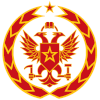
higurashihougi- Posts : 3176
Points : 3263
Join date : 2014-08-13
Location : A small and cutie S-shaped land.
- Post n°12
 SR-10 jet trainer
SR-10 jet trainer
Didn't see the old thread about Su-47 so I made this new thread.
https://www.rt.com/news/327664-forward-swept-wing-russia/
Russia’s 1st forward-swept wing training aircraft performs maiden flight (VIDEO)
A private Russian design bureau has conducted a maiden flight of an SR-10 dual-pilot forward-swept wing aerobatic trainer aircraft. It was earlier reported that it is planned to produce 16 SR-10 jets for the Defense Ministry.
The development of the fully composite twin-seater began at the Modern Aviation Technologies (KB SAT) design engineering bureau in 2007. The initial engineering development model was presented at MAKS-2009 airshow, but in the following years the project encountered financial problems.
On December 25, SR-10 made its first flight at an airfield near Vorotynsk, in the Kaluga Region, sdelanounas.ru website reports.
The SR-10 is a subsonic, single engine, all-composite dual-pilot aircraft with a moderate forward-swept wing scheme. Its reported maximum takeoff weight is 2,700 kilograms. The aircraft can reportedly be powered with either a Soviet design AI-25TLSh engine or a modern Russian-made AL-55 gas-turbine jet engine.
The SR-10’s flying quality parameters largely depend on the power unit. It was designed to have 900kph maximum horizontal flight speed, 1,500 km range capability and a 6,000-meter practical ceiling. Its cruising speed at the 6,000-meter height is 520kph.
In 2014, the SR-10 lost a Russian Defense Ministry primary training aircraft tender to Yakovlev Yak-152 turboprop trainer aircraft. However, KB SAT is still offering the aircraft to the Air Force as an intermediate trainer.
Dagestan’s Industry, Trade and Investment Ministry revealed plans to produce up to 16 SR-10 aircraft for Russia’s Defense Ministry, which is expected to allocate up to 2.5 billion rubles into the SR-10 project, the regional bureau of RIA news agency reported in mid-September.
As of now, Russia’s Air Force is actively using the recently developed Yakovlev Yak-130 as an advanced jet trainer. This aircraft is also delivered to foreign militaries, being positioned also as light attack aircraft.
Until now, the only operable forward-swept wing aircraft in Russia has been the Sukhoi Su-47 Berkut (Golden Eagle) fighter jet, which never went into mass production, yet became an advanced concept technology demonstrator and a testing ground for technical solutions later integrated into Russia’s 5G fighter jet PAK-FA.
https://www.rt.com/news/327664-forward-swept-wing-russia/
Russia’s 1st forward-swept wing training aircraft performs maiden flight (VIDEO)
A private Russian design bureau has conducted a maiden flight of an SR-10 dual-pilot forward-swept wing aerobatic trainer aircraft. It was earlier reported that it is planned to produce 16 SR-10 jets for the Defense Ministry.
The development of the fully composite twin-seater began at the Modern Aviation Technologies (KB SAT) design engineering bureau in 2007. The initial engineering development model was presented at MAKS-2009 airshow, but in the following years the project encountered financial problems.
On December 25, SR-10 made its first flight at an airfield near Vorotynsk, in the Kaluga Region, sdelanounas.ru website reports.
The SR-10 is a subsonic, single engine, all-composite dual-pilot aircraft with a moderate forward-swept wing scheme. Its reported maximum takeoff weight is 2,700 kilograms. The aircraft can reportedly be powered with either a Soviet design AI-25TLSh engine or a modern Russian-made AL-55 gas-turbine jet engine.
The SR-10’s flying quality parameters largely depend on the power unit. It was designed to have 900kph maximum horizontal flight speed, 1,500 km range capability and a 6,000-meter practical ceiling. Its cruising speed at the 6,000-meter height is 520kph.
In 2014, the SR-10 lost a Russian Defense Ministry primary training aircraft tender to Yakovlev Yak-152 turboprop trainer aircraft. However, KB SAT is still offering the aircraft to the Air Force as an intermediate trainer.
Dagestan’s Industry, Trade and Investment Ministry revealed plans to produce up to 16 SR-10 aircraft for Russia’s Defense Ministry, which is expected to allocate up to 2.5 billion rubles into the SR-10 project, the regional bureau of RIA news agency reported in mid-September.
As of now, Russia’s Air Force is actively using the recently developed Yakovlev Yak-130 as an advanced jet trainer. This aircraft is also delivered to foreign militaries, being positioned also as light attack aircraft.
Until now, the only operable forward-swept wing aircraft in Russia has been the Sukhoi Su-47 Berkut (Golden Eagle) fighter jet, which never went into mass production, yet became an advanced concept technology demonstrator and a testing ground for technical solutions later integrated into Russia’s 5G fighter jet PAK-FA.

max steel- Posts : 2930
Points : 2955
Join date : 2015-02-12
Location : South Pole
- Post n°13
 Re: SR-10 jet trainer
Re: SR-10 jet trainer

sepheronx- Posts : 8672
Points : 8932
Join date : 2009-08-06
Age : 35
Location : Canada
- Post n°14
 Re: SR-10 jet trainer
Re: SR-10 jet trainer
If they could use an RD-93 engine, single seat, maybe this could be a good cheap fighter.
Cool trainer though.

Guest- Guest
- Post n°15
 Re: SR-10 jet trainer
Re: SR-10 jet trainer
sepheronx wrote:
If they could use an RD-93 engine, single seat, maybe this could be a good cheap fighter.
Cool trainer though.
Yak 130 based single seat light figter would be still better most likely, this is extremly light aircraft. But i am all for Russians making cheaper single engined multirole fighter.

TheArmenian- Posts : 1880
Points : 2025
Join date : 2011-09-14
- Post n°16
 Re: SR-10 jet trainer
Re: SR-10 jet trainer
sepheronx wrote:
If they could use an RD-93 engine, single seat, maybe this could be a good cheap fighter.
Cool trainer though.
RD-93 is almost as big as this plane.

GunshipDemocracy- Posts : 6101
Points : 6121
Join date : 2015-05-17
Location : fishin on Stalin´s Strait between Mexico and Canada
- Post n°17
 Re: SR-10 jet trainer
Re: SR-10 jet trainer
Militarov wrote: Yak 130 based single seat light figter would be still better most likely, this is extremly light aircraft. But i am all for Russians making cheaper single engined multirole fighter.
Russians already made 2 of them: L-15 and Shafagh

Zivo- Posts : 1487
Points : 1511
Join date : 2012-04-13
Location : U.S.A.
I'll post this here, but if someone wants to create a dedicated SR-10 thread go ahead, I'm not sure how far this project will go.
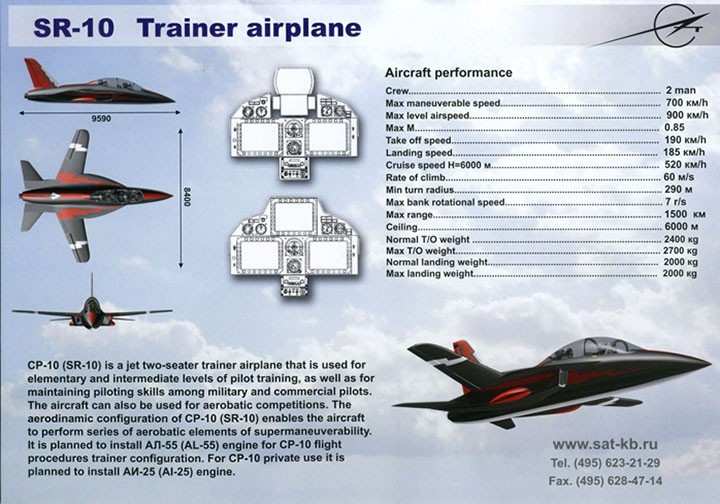
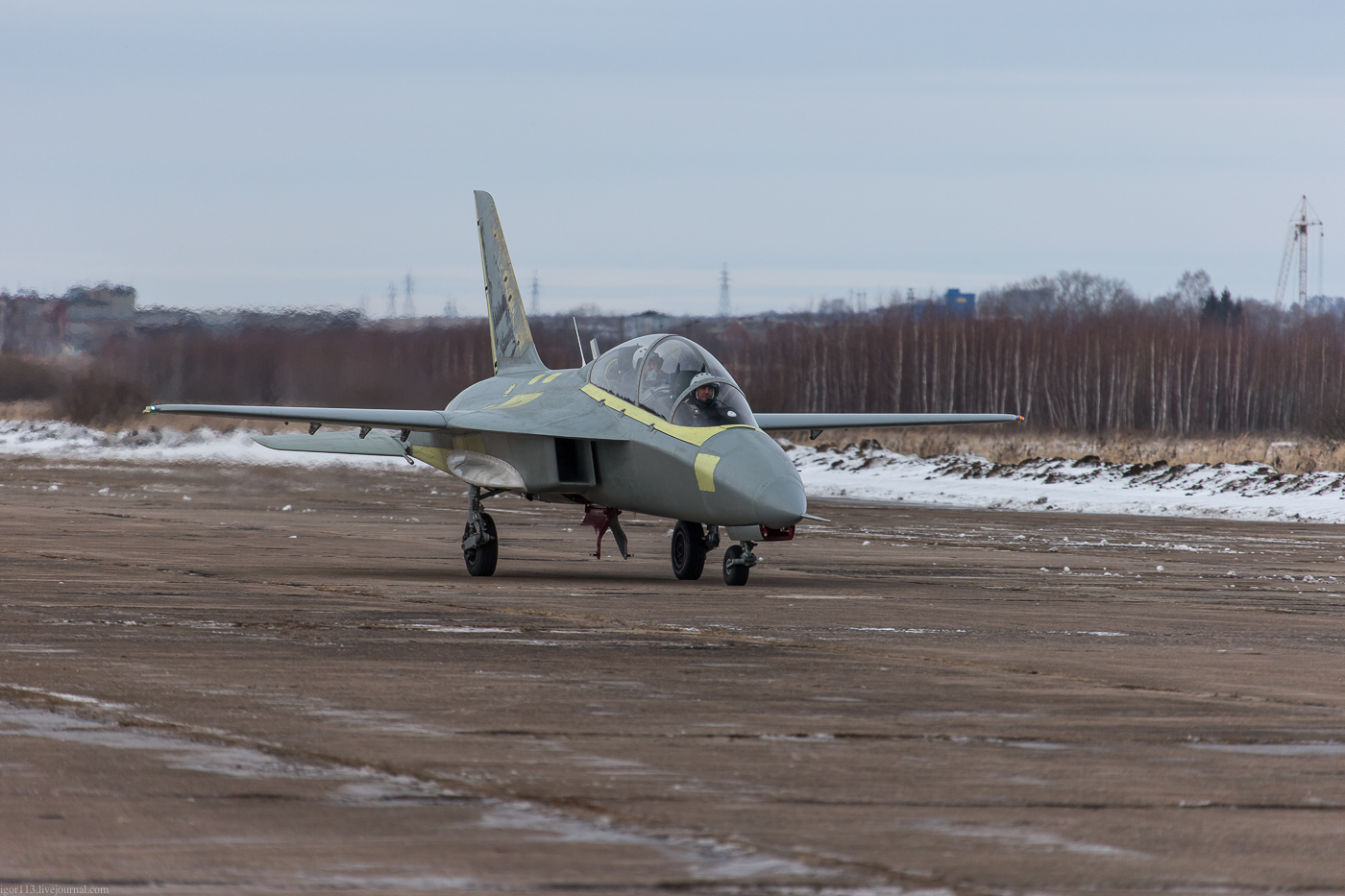

Lots more here:
http://bmpd.livejournal.com/1768923.html



Lots more here:
http://bmpd.livejournal.com/1768923.html

sepheronx- Posts : 8672
Points : 8932
Join date : 2009-08-06
Age : 35
Location : Canada
- Post n°20
 Re: SR-10 jet trainer
Re: SR-10 jet trainer


Guest- Guest
- Post n°21
 Re: SR-10 jet trainer
Re: SR-10 jet trainer
sepheronx wrote:
What... that doesnt make sense whatsoever.
They are already buying Yak-130 as an advanced trainer, and Yak-152 is to come as primary/entry trainer... Where da hell is this thing supposed to fit in? Between them? As... intermediate trainer?

magnumcromagnon- Posts : 8138
Points : 8273
Join date : 2013-12-05
Location : Pindos ave., Pindosville, Pindosylvania, Pindostan
- Post n°22
 Re: SR-10 jet trainer
Re: SR-10 jet trainer
Militarov wrote:sepheronx wrote:
What... that doesnt make sense whatsoever.
They are already buying Yak-130 as an advanced trainer, and Yak-152 is to come as primary/entry trainer... Where da hell is this thing supposed to fit in? Between them? As... intermediate trainer?
As I already stated before, the only reason VKS could ever put that in to service is if they plan on bringing forward-swept winged aircraft in to service, such as the Su-47, otherwise there's no logical reason to put that plane in to service. A major strike against the aircraft is that it's a private venture so...

Berkut- Posts : 190
Points : 215
Join date : 2015-05-05
- Post n°23
 Re: SR-10 jet trainer
Re: SR-10 jet trainer
magnumcromagnon wrote:Militarov wrote:sepheronx wrote:
What... that doesnt make sense whatsoever.
They are already buying Yak-130 as an advanced trainer, and Yak-152 is to come as primary/entry trainer... Where da hell is this thing supposed to fit in? Between them? As... intermediate trainer?
As I already stated before, the only reason VKS could ever put that in to service is if they plan on bringing forward-swept winged aircraft in to service, such as the Su-47, otherwise there's no logical reason to put that plane in to service. A major strike against the aircraft is that it's a private venture so...
/shitrussiadefencesays.
Yes, SR-10 is supposed to fit between Yak-130 and 152.

sepheronx- Posts : 8672
Points : 8932
Join date : 2009-08-06
Age : 35
Location : Canada
- Post n°24
 Re: SR-10 jet trainer
Re: SR-10 jet trainer
Berkut wrote:magnumcromagnon wrote:Militarov wrote:sepheronx wrote:
What... that doesnt make sense whatsoever.
They are already buying Yak-130 as an advanced trainer, and Yak-152 is to come as primary/entry trainer... Where da hell is this thing supposed to fit in? Between them? As... intermediate trainer?
As I already stated before, the only reason VKS could ever put that in to service is if they plan on bringing forward-swept winged aircraft in to service, such as the Su-47, otherwise there's no logical reason to put that plane in to service. A major strike against the aircraft is that it's a private venture so...
/shitrussiadefencesays.
At least he isn't acting like an arrogant little prick like the ones you can find on keypub. The ones that talks shit yet doesn't back it up but demands others to.
Ontopic:
I myself am glad they are looking into this. I hope there is an order.

Guest- Guest
- Post n°25
 Re: SR-10 jet trainer
Re: SR-10 jet trainer
I am not sure if i like the idea, i would rather see good turboprop intermediate trainer, one that could also get made into modern COIN rather than another jet trainer. Somewhat like Super Tucano, i love that thing so much 
|
|
|


